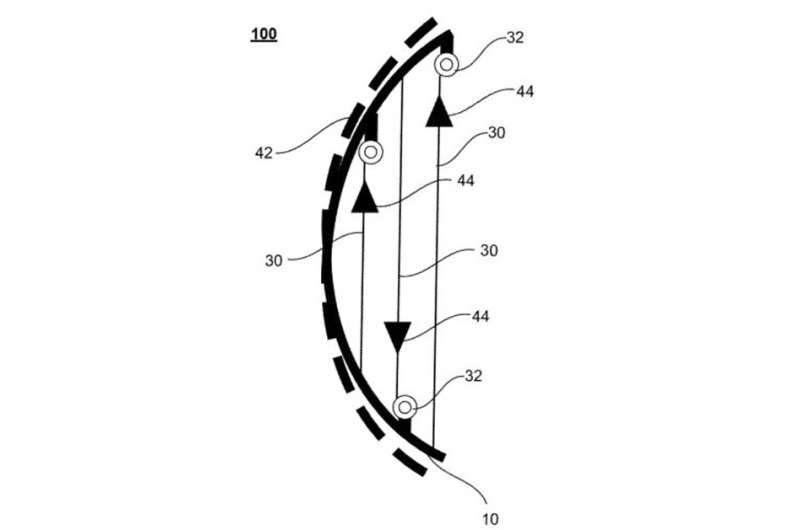August 15, 2017 weblog
Patent talk: Car can respond to potential collision by altering car surface rigidity

(Tech Xplore)—Google has already emblazoned brand recognition to the phrase "driverless cars" but what about a new twist in soft driverless cars if and when applicable for safety sake?
Charlie Osborne reported Monday in ZDNet in addition to other tech-watching sites that Waymo was issued a patent by the United States Patent and Trademark Office (USPTO) and the patent describes a method and system to make our cars softer.
"If an accident is expected, one or more sections of the car—such as the hood, bumper, or panels—will become softer through cutting, releasing, or loosening the tension members. In turn, this would reduce the solidity of surfaces and the potential harm of impact," said ZDNet.
The patent was filed back in 2015.To limit the chances of serious accidents and fatalities, Waymo is proposing a way to alter the stiffness of a vehicle's body for safety reasons.
ZDNet asked, "Can squishy vehicles stop pedestrians from getting hurt during accidents?" If you nix the rigid, hard shells of cars, will it make a safety difference?
Waymo is the autonomous-car development company spun out of Google's parent Alphabet in December last year.
A key concept in this has to do with "tension members."
The tension members—cables or rods, for example— can be arranged to alter car surface rigidity The members change tension "should sensors pick up and predict a potential object, hazard, or pedestrian," Osborne wrote.
Stated in very human terms, Ethan Baron, SiliconBeat, had a go: "Just as thawing a turkey leg reduces the rigidity that could damage your noggin, making a car floppy reduces the damage it could cause to other vehicles or people."
The technology at play here includes sensors embedded in the car. Various parts of the patent discuss system components for detecting and performing analysis on objects outside the vehicle.
The "perception" system, for example, may include lasers, sonar, radar, one or more cameras, or other detection devices. The computing device may control the direction and speed of the vehicle by controlling various components.
Let's look at the bigger picture. Vlad Mitrache in autoevolution did just that. He said that "the integration of autonomous cars into our lives can't possibly go 100 percent smoothly. There will be incidents, and some of them are going to be serious. The ones everyone fears the most, however, are those involving pedestrians...However, looking out for pedestrians is going to prove an even bigger challenge than trying to decipher the minds of the human drivers sitting behind the wheels of their cars. That's because the behavior of a human being moving on its own two feet is even more unpredictable than when it's driving."
Meanwhile, Jon Fingas in Engadget looked at the patent and posed question marks too. He said, "there are some unanswered questions about the effectiveness in real life. Would the shell be as durable in the event of a car-on-car crash as a conventional panel? Would the cables and other attachments add a significant amount of weight or cost to the car? And would this increase the risk of injury for people inside the car?"
Gerald Lynch in TechRadar had a similar question, of "what does this mean for the safety of the passengers of the vehicle? In the event of a crash, the integrity of the body of the car is essential to protecting passengers."
Nonetheless, Osborne commented, "it does seem to have more merit that one of Google's previous ideas—making cars sticky to reduce injury on impact."
Last year, Google made US patent news for a sticky coating that could be applied to self-driving cars so pedestrians stick instead of bouncing off when hit.
More information: Reducing surface rigidity of a vehicle, US Patent 9,725,060
Abstract
Aspects of the disclosure relate altering the rigidity of a vehicle's surface. More particularly, the vehicle may contain tension members that are arranged so that a change in tension across one or more of the tension members will alter the rigidity of the vehicle's surface. The vehicle may identify and respond to a potential collision by altering the tension that is applied to one or more tension members, thereby altering the rigidity of the vehicle's surface.
© 2017 Tech Xplore



















